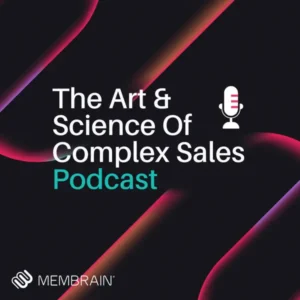The second half of the year represents your greatest opportunity to accelerate past the competition. While other teams coast on first-half wins or scramble to recover from losses, top-performing sales leaders recognize mid-year as a strategic inflection point that can define their entire year.
The evidence is clear: teams that execute disciplined mid-year reviews consistently outperform their peers in achieving annual targets. This isn’t a coincidence; it’s the result of deliberate strategic moves that separate elite performers from the pack.
Set Crystal-Clear Expectations
Ambiguity is the silent killer of sales performance. Your team doesn’t need motivation speeches; they need laser-focused clarity on what success looks like and how to achieve it. This means defining specific revenue targets for the second half, establishing activity metrics that directly drive results, clarifying account priorities and resource allocation, and documenting success definitions for each team member.
The most effective sales leaders schedule one-on-one meetings immediately to document exactly what success looks like for each rep. They don’t leave anything to interpretation, and they track progress relentlessly. When expectations are crystal clear, performance tends to follow predictably.
Reassess Customer Potential with Fresh Eyes
One of the most costly mistakes sales teams make is evaluating accounts based solely on past performance. Markets shift, companies grow, and buying committees evolve. Yesterday’s underperformers could become tomorrow’s breakthrough accounts, but only if you’re paying attention to the signals.
Many previously “dormant” accounts show renewed buying signals during mid-year budget cycles. Companies that appeared uninterested in the first half may have experienced organizational changes, budget reallocations, or strategic shifts that create fresh openings for your solutions.
Take a hard look at your bottom 20% of accounts from the first half. Analyze them for expansion opportunities, new decision-makers, or changed business circumstances. The account that rejected your proposal in March might be your biggest win in October, if you approach them with updated intelligence and renewed focus.
Accelerate Skills Through Targeted Development
Generic training programs waste time and dilute impact. Peak performers need precision coaching on specific competencies that directly affect their results. The key is mapping your team’s individual strengths and weaknesses with surgical precision.
Ask yourself:
- Who excels at prospecting but struggles with discovery calls?
- Who builds rapport quickly but can’t create urgency?
- Who understands technical features but misses the business impact conversation?
Each team member has a unique profile of strengths to leverage and gaps to fill.
Create individualized 90-day skill development plans that focus on one critical improvement area per rep. This targeted approach generates measurable results because it addresses specific performance bottlenecks rather than attempting broad-based improvement across multiple areas simultaneously.
Transform Data Into Strategic Advantage
Your CRM system contains the blueprint for second-half success, but only if you know how to extract actionable intelligence from the numbers. Most sales teams collect data without analyzing it strategically, missing critical insights that could accelerate their performance.
Focus on the metrics that matter most: deal velocity by stage to identify bottlenecks, win rates segmented by rep, product, and market to reveal patterns, pipeline health ratios to ensure adequate coverage, and activity patterns that separate top performers from laggards.
Run a comprehensive pipeline audit this month. Determine which deals will realistically close by year-end, then ruthlessly prioritize resources on your highest-probability opportunities. This isn’t about optimism, it’s about mathematical precision in resource allocation.
The Competitive Advantage
Mid-year reviews aren’t administrative exercises; they’re competitive weapons. While your competitors react to market forces, you will proactively shape outcomes through strategic decision-making and precise execution.
The teams that commit to these four strategic moves position themselves to dominate the second half while others struggle to maintain momentum. Your competition is already planning its next move. Make sure yours is better, faster, and more decisive.
Excellence isn’t accidental. It’s the result of deliberate actions taken at strategic moments. The mid-year inflection point is your moment. Execute these moves with precision, track your progress relentlessly, and watch your team pull ahead of the competition when it matters most.
Here are four actionable steps that a sales leader can take immediately based on the information in this article.
- Schedule Mid-Year Alignment Meetings This Week: Don’t wait for momentum to slip. Put one-on-one sessions with each sales rep on the calendar within the next seven days. Use these meetings to clarify expectations, document specific goals for the remainder of the year, and confirm accountability checkpoints. The faster you create alignment, the quicker performance accelerates.
- Conduct a Fresh Account Review by Next Friday: Pull reports on your bottom 20% of accounts from the first half. Task your reps with re-examining these accounts for new signals, budget reallocations, new executives, or strategic shifts. Request a brief update on which dormant accounts should be re-engaged and the reasons for doing so. This action ensures your pipeline reflects current opportunities rather than outdated assumptions.
- Launch 90-Day Skill Development Plans: Map each rep’s most pressing performance gap and set one measurable skill-development goal. For example, “improve discovery call effectiveness by securing next-step commitments in 80% of calls.” Assign resources, role-plays, coaching sessions, or targeted training, and review progress at 30, 60, and 90 days.
- Run a Pipeline Audit and Re-Prioritize: Within the next two weeks, complete a full pipeline health check. Score deals by close probability, eliminate “hope deals,” and redirect resources toward high-likelihood opportunities. Then, update your forecast to reflect realistic outcomes, not wishful thinking. This allows you to allocate coaching, marketing, and executive support where it will make the most measurable impact.





